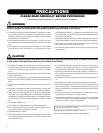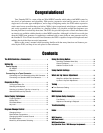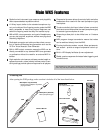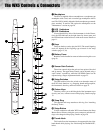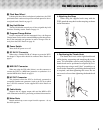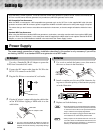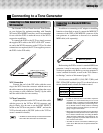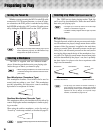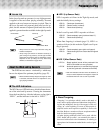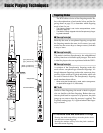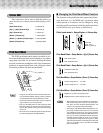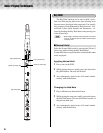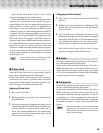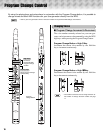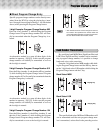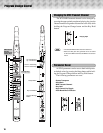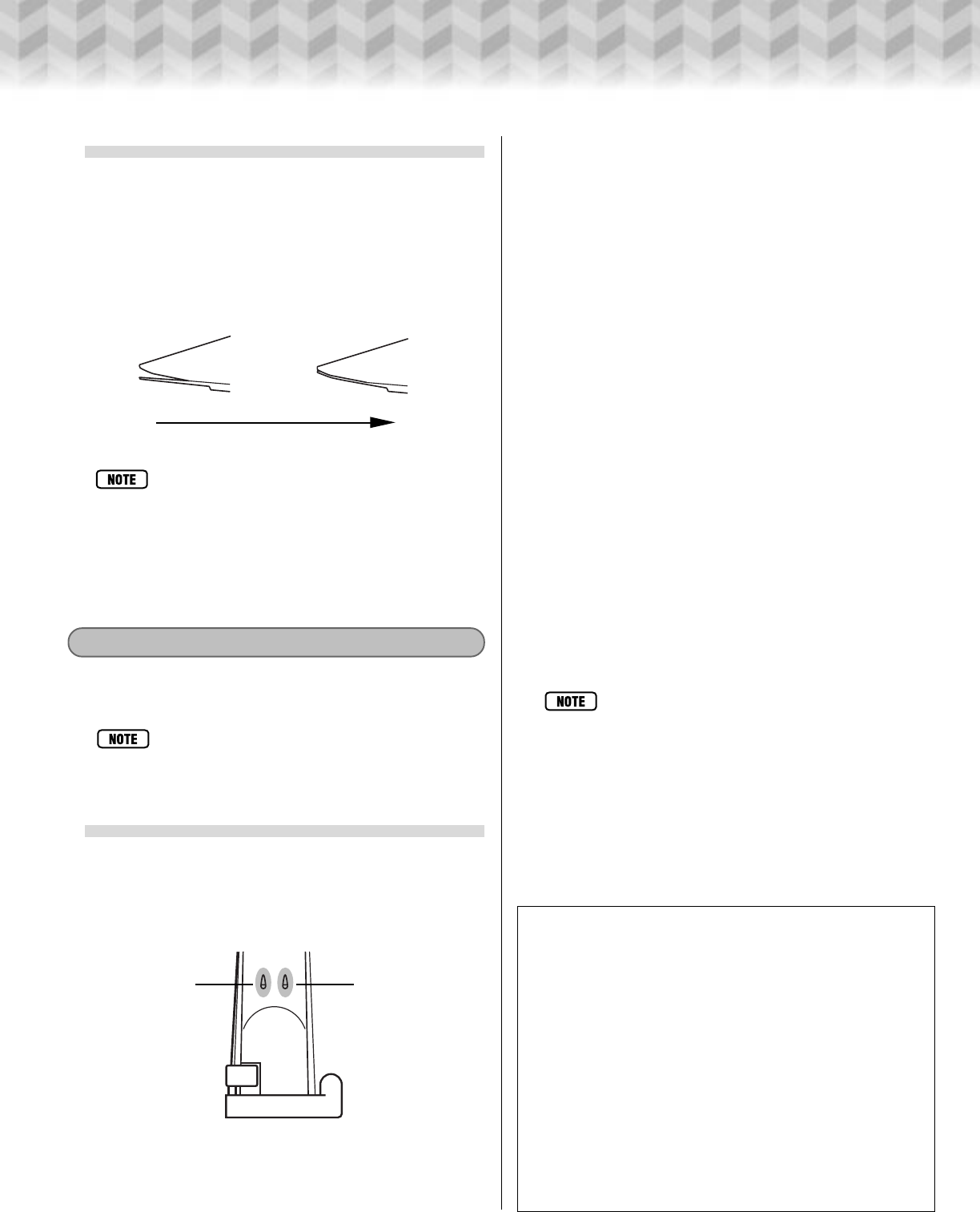
11
Preparing to Play
■ Loose Lip
In the loose lip mode no pressure (or very slight pressure)
is applied to the reed when playing normally. Pressure
applied to the reed causes an increase in pitch. Thus, in
the loose lip mode only upward pitch bend can be ap-
plied, but the amount of upward pitch bend that can be
applied is greater than that available in the tight lip mode.
Normal Pitch
Bend Up
Upward Pitch Bend
• Always select the Loose Lip mode when using the
reedless mouthpiece.
• The lip range (the amount of variation caused by a
given change in lip- pressure), and the type of effect
produced by lip pressure (pitch or modulation) can be
adjusted via the Lip Range and Lip Data setup
switches, as described on page 22,23.
About the Wind and Lip Sensors
The WX5 has two sensors - wind and lip - which may
have to be adjusted for optimum playability (page 25).
• When the WX5 is initially shipped, the Tight Lip mode
is selected, and both sensors are adjusted for “aver-
age” playing conditions.
■ The LED Indicators
The WX5 has two LED indicators which indicate the sta-
tus of the wind and lip sensors. Viewing the instrument
from the front (the key side) the indicator on the right is
“LED 1”, and the indicator on the left is “LED 2”.
LED 2 LED 1
● LED1 (Lip Sensor Data)
LED 1 responds as follows in the Tight Lip mode, and
with the initially factory settings:
LED On : Reed open (bend down).
LED Off : Reed at center (no bend).
LED On : Reed closed (bend up).
In the Loose Lip mode LED 1 responds as follows:
LED Off :
Reed completely open (pitch bend data “0”).
LED On : Reed closed (bend up).
When flute fingering is selected (page 12), LED 1 re-
sponds as follows (in this mode the Tight/Loose Lip set-
ting is ignored):
LED Off : Reed completely open (pitch as fingered).
LED On : Reed closed (pitch one octave above fingered
pitch).
● LED 2 (Wind Sensor Data)
LED On : Breath applied (sound will be produced if the
WX5 is connected to a tone generator).
LED Off : No breath pressure (no sound will be produced
by the tone generator connected to the WX5)
• Both LED indicators will flash when the batteries (if
used) are almost depleted. If this happens, replace all
six batteries with new ones as soon as possible.
❖ About Tonguing
“Tonguing” is a technique which is used to add attack to
notes, and to rapidly repeat notes. Rather than simply blow-
ing into the mouthpiece, the tip of the tongue is used as if
saying “tu” at the beginning of a note. A little practice is
required, but the extra expressive capability is well worth
the effort. Refer to a recorder or flute or saxophone method
book for details on tonguing technique.
All other playing techniques which can be used with the
WX5 -breath and lip control - are essentially the same as
those used with acoustic wind instruments, so referring to
appropriate wind instrument method books can be of great
value.



